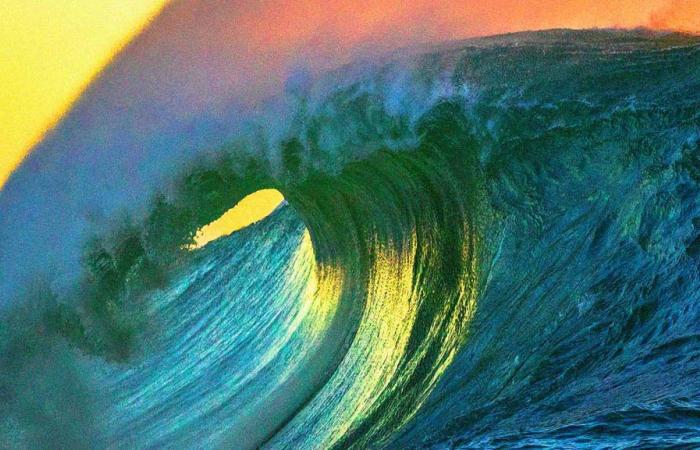Kristin Toussaint
3 minutes reading
PFAS, popularly known as “forever chemicals” or “forever chemicals” are ubiquitous in our environment. In the USA alone, there are more than 57,000 sites contaminated with these products. They are present in drinking water, soil, products and the ocean. And, according to new research, when ocean waves crash on beaches around the world, they spray hundreds of thousands of PFAS particles into the air, creating a cycle in which these chemicals travel from land to sea and back again. -versa.
PFAS (perfluoroalkyl and polyfluoroalkyl substances) are a class of synthetic chemicals widely used to make products resistant to stains, grease and water. They have been nicknamed “forever chemicals” because they do not break down easily and therefore remain in our environments for thousands of years. They are linked to harmful health effects, including cancer, decreased fertility, developmental delays, and more.
When eternal chemicals contaminate the land, they reach the groundwater and eventually the ocean. Scientists used to think that once there, the particles would sink and dissolve into the ocean depths. But researchers have found that this is not true. Instead, a recent study from Stockholm University, published in Science Advances, details a boomerang effect in which sea vapor forever spreads chemicals into the air and land.
“It’s a worrying cycle from land to sea – and then back to land,” explained Ian Cousins, lead author of the study and professor of environmental sciences at Stockholm University, in an email. “PFAS are emitted on land and then washed out to sea. They then return to land via marine spray aerosols, and so the cycle continues. This discovery brings a whole new dimension to the term ‘forever chemicals.’ “
This happens because air bubbles collect PFAS as they rise in seawater. Then, when the waves crash against the surface, the sea mist causes these air bubbles to burst, releasing all the eternal chemicals contained in them, which are a high concentration of PFAS particles. The amount of PFAS sprayed into the air was, in some cases, more than 100,000 times greater than that found in a sample of seawater. The concentration is so high that sea waves emit more PFAS into the air than industrial pollution.
For the study, researchers sailed on a ship from Southampton, United Kingdom, to Puntas Arenas, Chile, measuring the concentration of PFAS in the sea air along the way. “We had previously carried out laboratory experiments that showed that PFAS were highly enriched in sea mist aerosols, so we were not entirely surprised [com as descobertas]”, said Cousins. “However, we were surprised that the enrichment of PFAS in marine aerosols generated in the field was even greater than in the laboratory.”
The findings show that both people and environments along coastlines are at greater risk of PFAS exposure — and the health effects that come with it. Danish scientists have already found some evidence that the sea is the main source of PFAS along their country’s coast. The Stockholm researchers say this aligns with their findings and shows that coastal communities around the world can be impacted by PFAS exposure.
Several companies are working on ways to eliminate PFAS in drinking water and prevent the spread of PFAS contamination in soils. But when it comes to getting these ageless chemicals out of the ocean, “that’s basically impossible,” Cousins pointed out. “They are so widely spread in the oceans that it would cost an enormous amount of money to filter them.” The researchers hope their work will help regulators realize, Cousins added, that “using these extremely persistent chemicals is a terrible idea, and we need to find alternatives to the many uses of PFAS.”
ABOUT THE AUTHOR
Kristin Toussaint is an assistant editor on Fast Company’s Impact desk. know more
Tags: Ocean waves chemicals industrial pollution
--





